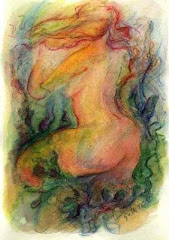Enjoy this Guest Blog by Barbara O’ Brien
Many Americans assume the new health care reform act will benefit mostly the poor and uninsured and hurt everyone else, according to polls. As Matt Yglesias wrote, “Basically, people see this as a bill that will take resources from people who have health insurance and give it to people who don’t have health insurance.” Those who still oppose the reform say that people ought to pay for their own health care.
We all believe in the virtues of hard work and self-reliance, but these days it’s a fantasy to think that anyone but the mega-wealthy will not, sooner or later, depend on help from others to pay medical bills. And that’s true no matter how hard you work, how much you love America, or how diligently you take care of yourself. The cost of medical care has so skyrocketed that breaking an arm or leg could cost as much as a new car. And if you get cancer or heart disease — which can happen even to people who live healthy lifestyles — forget about it. The disease will not only clean you out; it will leave a whopping debt for your survivors to pay.
And the truth is, we all pay for other peoples’ health care whether we know it or not. When people can’t pay their medical bills, the cost of their health care gets added to everyone else’s bills and insurance premiums. When poor people use emergency rooms as a doctor of last resort, their care is not “free.” You pay for it.
Another common fantasy about medical care is that the “free market” provides incentives for medical companies to develop innovative new drugs and treatments for disease without government subsidy. It’s true that private enterprise is very good at developing profitable health care products. But not all medical care can be made profitable.
For years, the U.S. government has been funding medical research that the big private companies don’t want to do because there is too much cost for the potential profit. This is especially true for diseases that are rare and expensive to treat. An example of a recent advance made possible by government grants include new guidelines for malignant pleural mesothelioma treatment developed by Sloan-Kettering mesothelioma cancer researchers. Another is a blood screening test developed by mesothelioma doctors like thoracic surgeon Dr. David Sugarbaker. The health reform act provides for more dollars for such research, from which even many of the tea party protesters will benefit.
The biggest fantasy of all was that people who had insurance didn’t have to worry about health care costs. But the fact is that in recent years millions of Americans have been bankrupted by medical costs, and three-quarters of the medically bankrupt had health insurance. And yes, insurance companies even dumped hard-working, law-abiding patriots. But the health care reform act will put an end to that, and now America’s hard-working, law-abiding patriots are more financially secure, whether they like it or not.
The Zaftig Redhead. All Rights Reserved.












